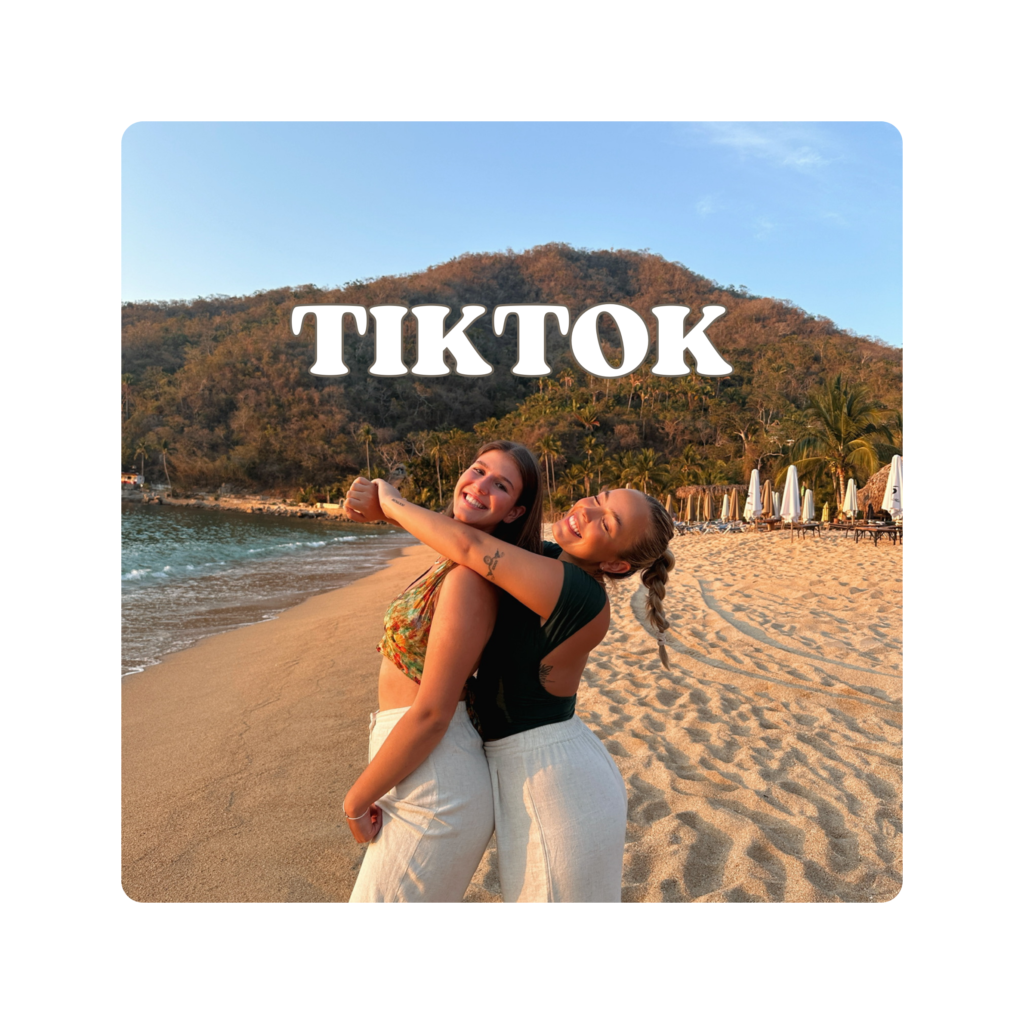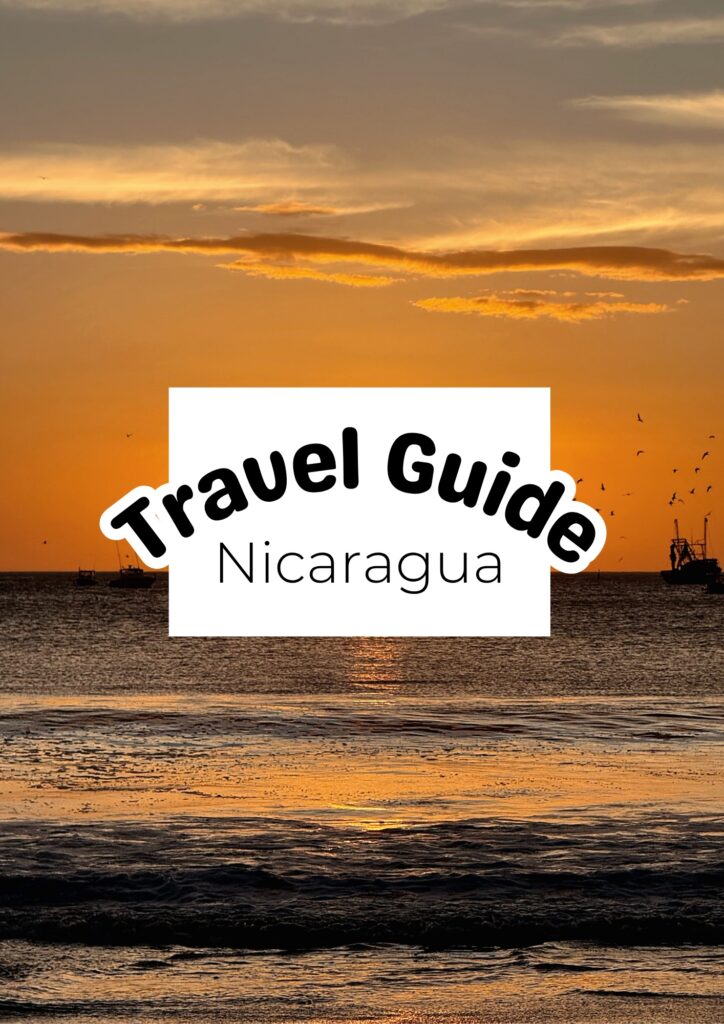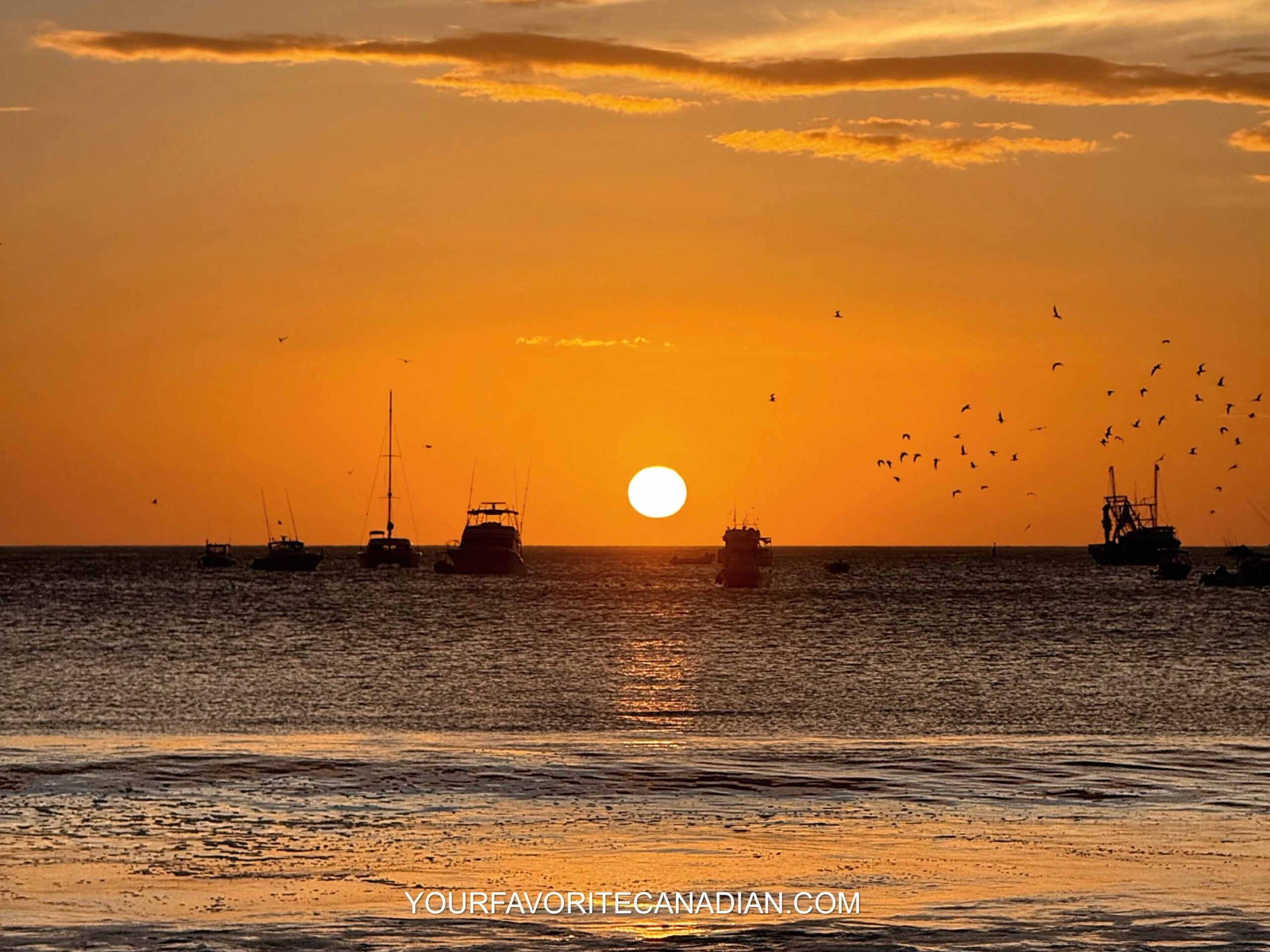Planning a trip to Nicaragua? This guide is the perfect place to start.
From understanding local customs and finding the best time to visit, to knowing how to stay connected, safe, and healthy on the road—this article is designed to help you prepare with confidence. Let’s get you ready for an unforgettable adventure in Nicaragua.
Table of Contents
- Best Time to Visit: Climate, Temperature Precisions, Crowds & Prices
- Local Culture & Etiquette: Cultural Norms, Language, Etiquette – Visiting Religious Sites
- Money Currency & Payments
- Accommodation Options: Types of Accommodations, Recommendations, Essential Apps
- Local Cuisine
- Transportation: Transportation Options, Our Experience – Tips
- Safety & Health: Tap Water Conditions, Health Precautions, Emergency Informations, Safety Tips
- Visa Requirements
- Staying Connected: Getting a Sim Card in Nicaragua
1
Best Time to Visit Nicaragua
Whether you’re chasing sunshine, avoiding crowds, or traveling on a budget, here’s everything you need to know to pick the best time to visit Nicaragua.
Nicaragua’s Climate
Nicaragua has two main seasons:
- Dry Season in Nicaragua(November to April):
This is the most popular time to visit, especially for beach lovers and volcano trekkers. Expect plenty of sunshine, clear skies, and minimal rain—perfect for outdoor adventures and exploring the country’s natural beauty.
- Rainy Season in Nicaragua(May to October):
Also known as the “green season,” this time of year sees more rain, especially in the afternoons. Mornings are often sunny, and the landscape is lush and vibrant. While rural roads may be muddy, it’s a great time to experience Nicaragua with fewer tourists and more local flavor.
Pro Tip: The rain usually starts in May but is most intense in September and October. If you don’t mind a few showers, traveling in the early or late rainy season (May–June or late October) can still be a great option.
Temperature
Nicaragua is warm year-round, but temperatures vary depending on where you go:
- Pacific Coast (San Juan del Sur, León, Granada):
Temperatures hover between 28–35°C (82–95°F). It’s hot and dry during the dry season, and more humid during the rainy season.
- Central Highlands (Matagalpa, Estelí):
Expect cooler temps around 20–28°C (68–82°F), especially at night. Great if you’re looking to escape the heat.
- Caribbean Coast (Corn Islands, Bluefields):
Tropical and humid year-round, with temperatures between 25–31°C (77–88°F). Rain is more consistent throughout the year here, but the islands still enjoy sunny stretches, especially in March and April.
Note: March and April are typically the hottest months across the country—great for beach days but potentially intense for hiking or city sightseeing.
Crowds & Prices
- High Season (December to April):
This is peak travel time in Nicaragua. Expect more tourists, especially around Christmas, New Year, and Easter (Semana Santa). Prices for accommodation and tours are at their highest, and places can book up quickly—so plan ahead if you’re traveling during this period.
During Semana Santa, especially in San Juan del Sur, prices are even higher than Christmas or New Year. Accommodation can easily cost double the usual rate, and everything is fully booked for Friday and Saturday. It’s highly recommended to book well in advance—otherwise, finding an affordable and well-located place is very difficult or nearly impossible.
- Shoulder Season (November, May–June):
These months offer a sweet spot: fewer crowds, lower prices, and generally good weather. It’s a great time for budget travelers or those looking for a more relaxed experience without compromising on activities.
- Low Season (September–October):
This is the quietest (and wettest) time to visit. While some areas may be harder to access due to rain, you’ll find rock-bottom prices on accommodations and tours. It’s ideal for slow travelers or those looking to experience Nicaragua more like a local.
That said, October isn’t just light rain—there can be intense, all-day downpours that last for several days in a row. In places like San Juan del Sur, flooding is common during this month, so be prepared for disruptions if you travel during this time.
So, When’s the Best Time to Go?
If you want the best weather, go between December and March—this is the driest and sunniest period. For lower prices and fewer tourists, May–June or November are great options, with occasional rain but generally good travel conditions.
If you’re the kind of traveler who doesn’t mind rain for big savings, September might work—but October can bring heavy, non-stop downpours and even flooding in some areas like San Juan del Sur. It’s the least recommended month unless you’re prepared for serious rain.
2
Local Culture & Etiquette in Nicaragua
The local culture is a beautiful blend of Indigenous roots, Spanish colonial influence, and modern Nica traditions. Here’s what you need to know about cultural norms, language, and etiquette, especially when visiting religious sites.
Nicaragua’s Cultural Norms
Nicaraguans, or “Nicas” as they call themselves, are generally friendly, polite, and proud of their country. Here are a few key things to keep in mind:
- Warm greetings matter: A friendly “¡Buenos días!” or “¡Buenas tardes!” goes a long way. Handshakes are common in more formal settings, while friends often greet with a kiss on the cheek.
- Modesty is appreciated: While beachwear is totally fine on the coast or at the beach, it’s respectful to cover up (especially shoulders and knees) when walking through towns or rural areas.
- Punctuality is flexible: “Nica time” is real—things often run on a more relaxed schedule. Patience is key, whether you’re waiting for a bus or meeting someone for a tour.
- Family comes first: Nicaraguan culture is deeply family-oriented, and weekends or holidays often revolve around family gatherings. You’ll likely see large family groups at beaches, restaurants, and parks.
Nicaragua’s Spoken Language
Spanish is the official language, and while English is spoken in some touristy areas, it’s always appreciated when travelers try to speak a bit of Spanish.
Simple phrases like “gracias” (thank you), “por favor” (please), and “¿cuánto cuesta?” (how much does it cost?) go a long way in making connections and showing respect.
Don’t worry if your Spanish isn’t perfect—locals are usually patient and will do their best to help you out. Smiles and hand gestures work wonders too!
Pro Tip: Download Google Translate or a basic Spanish phrasebook app before your trip for quick reference.
Etiquette at Religious Sites in Nicaragua
Nicaragua is a predominantly Catholic country, and churches and religious festivals play an important role in everyday life. If you plan to visit a cathedral or observe a religious procession, here are a few things to keep in mind:
- Dress respectfully: Avoid shorts, tank tops, or beachwear. Opt for modest clothing—ideally with shoulders and knees covered.
- Speak quietly: Many churches are active places of worship. Keep your voice low and your phone on silent while inside.
- Be mindful during processions or religious holidays: If you’re lucky enough to witness events like Semana Santa (Holy Week), observe respectfully from the sidelines, and avoid blocking participants or interrupting the flow.
3
Money, Currency & Payments in Nicaragua
When traveling to Nicaragua, understanding the local currency and payment methods is essential for a smooth and hassle-free experience. Here’s everything you need to know about managing money during your stay in the country.
Nicaraguan Córdoba (NIO): The Local Currency
The official currency in Nicaragua is the Nicaraguan Córdoba (NIO). While U.S. dollars are widely accepted in tourist areas, it’s best to have córdobas on hand, especially when traveling to more rural regions or shopping at local markets.
Exchange Rates
Exchange rates can fluctuate, so it’s a good idea to check the current rate before your trip. Typically,
- 1 USD = 36-38 NIO
- 1 CAD = 26-28 NIO
Be sure to check for up-to-date rates before exchanging money.
The best way to get a good exchange rate is to withdraw money from an ATM that supports your card network and decline the conversion rate offered by the ATM—this ensures your home bank handles the exchange, usually at a better rate.
Where to Exchange Money in Nicaragua
For the best rates, use ATMs, banks, or official currency exchange offices (Casas de Cambio). While hotels and tour operators may exchange money, their rates are often less favorable. Avoid street money changers, as scams and counterfeit bills can be an issue.
Card Payments, Minimum Spend & Transaction Fees in Nicaragua
- Cash is king in Nicaragua, especially in small shops, markets, and local transport.
- Visa and Mastercard are the most widely accepted credit and debit cards in Nicaragua. American Express and other cards may not be as commonly accepted, especially in smaller businesses.
- Many establishments have a minimum spend requirement for card payments, so it’s always a good idea to ask before making a purchase. Additionally, some businesses charge a 4-6% fee for card transactions, which can add up quickly.
- Always carry small bills and coins, as breaking large denominations can be difficult in rural areas.
ATM Fees
Most Nicaraguan ATMs charge a withdrawal fee ranging from 150 to 250 NIO per transaction, in addition to any fees your home bank may apply. To minimize costs, it’s best to withdraw larger amounts at once rather than making multiple small transactions.
Tipping in Nicaragua
Tipping is appreciated but not always expected.
- Restaurants sometimes include a 10% service charge in the bill—check before adding a tip.
- For good service, leaving an extra 5-10% is a nice gesture.
- Tour guides and drivers often rely on tips, so $2-5 USD per person is a fair amount.
4
Accommodation Options
Choosing your accommodation can significantly impact your travel experience. To help you make the best decision, here’s a breakdown of the three main types of accommodations, with recommendations from our past trips and essential apps that will make booking these stays easier for you!
Types of Accommodations
- Villas: Renting a villa is by far the most visually stunning option, offering unique and original stays that can be truly memorable. Villas are usually equipped like apartments, complete with a kitchen and fridge, allowing you to prepare your own meals. While villas tend to be pricier, you can save money by cooking rather than dining out every day. This option is especially ideal for families or large groups, as splitting the cost can make it more affordable and enjoyable than staying in separate hotel rooms.
- Hotels: Hotels are a classic choice with a wide range of options to suit different budgets. Staying in a hotel offers you the comfort of daily housekeeping, room service, and access to various amenities that you won’t find in a villa, such as spas, yoga classes, and more. If you value security and convenience, hotels are a great option, especially for those who prefer having staff available around the clock to assist with any needs.
- Hostels: For backpackers and budget travelers, hostels are the most economical choice. While they may lack the luxury and comfort of villas or hotels, hostels offer a unique and social experience, perfect for young travelers. You’ll typically have a bed in a shared dormitory, making it an excellent way to meet new people, especially if you’re traveling solo. Many hostels also organize group activities to help guests connect. If you’re young and willing to trade a bit of comfort for a memorable and social experience, hostels are the way to go.
Recommendations
Here are three of my favorite places I stayed during my trip to Nicaragua:
FreeSpirit Hostel, El Transito:
This hostel in El Transito was one of the first highlights of our trip. A quick heads-up: the hostel is owned by French Canadians, so you’ll likely hear a lot of French being spoken by guests.
That said, if that doesn’t bother you, you’re in for a treat. A delicious vegetarian breakfast and dinner are included in the price of your room every day. The hostel also has a laid-back surf vibe, so expect to spend your days at the beach or by the pool. Overall, if you’re looking for a chill spot to relax, meet fellow young backpackers, learn to surf, or simply unwind, this is a great choice.
Waves & Wi-Fi, Popoyo – Boutique Hotel:
If you’re looking for a place to work remotely while co-living with other travelers, this is the spot for you. Not only is it one of the most beautiful boutique hotels we’ve ever stayed in, but the owners are incredibly kind and welcoming. Each room has air conditioning, a private bathroom, and even hot water! Plus, there’s a great café next door—Kooks Café—offering delicious meal options.
The only downside is the location. It’s not situated right in the heart of Popoyo, so you’ll either need to take a taxi or walk along the beach to get to the main action. Also, since it’s relatively isolated, there’s no public transportation available. You’ll need to rely on taxis for arrival and departure. It’s usually not a big issue for most travelers, but the taxi fares can get expensive and be a bit inconvenient.
Casa Nómada, San Juan del Sur – Airbnb:
Casa Nómada is a charming, locally focused Airbnb in San Juan del Sur, owned by a French Canadian who also runs a travel booking company called La Chica Au Nica (definitely check her out!). Her Airbnb is located just steps from the beach and includes everything you need: air conditioning in each room, a pool, a cozy outdoor area with seating, and a fully equipped kitchen.
If you’re looking for a peaceful place to sleep while still being close to the city’s parties and activities, this is the perfect fit. Plus, Véronique will share all the best local tips and recommendations to help you make the most of your time in Nicaragua.
Essential Apps
- Booking.com: This app offers a wide range of accommodations, including hotels, hostels, and villas, all in one place.
- Airbnb: Perfect for finding unique and original villas or apartments that offer a home-like experience.
- Hostelworld: Specializing in hostels, this app features an excellent rating system to help you choose the best option. It also includes group chats where you can connect with others who will be staying at the same hostel.
Extra Recommendation: Once you’ve found a place you like, especially with hotels and hostels, be sure to visit their official website. Often, you can find exclusive discounts when booking directly through them.
Stay connected! Follow us on social media for exclusive content & updates on our travels.



On our website, you’ll find all the essential information and tips, while on our social media, you’ll get even more – including personal experiences, funny moments, stunning videos, and much more!
5
Nicaragua’s Local Cuisine
Nicaraguan cuisine is a rich blend of indigenous flavors, Spanish influence, and Central American soul. It’s hearty, full of flavor, and deeply rooted in local traditions. Whether you’re eating at a street food stall or a beachside restaurant, you’re in for a culinary experience that tells the story of the country’s culture and history.
Some Must-Try Dishes in Nicaragua
- Gallo Pinto – The national staple, this simple but delicious mix of rice and beans is usually served with eggs, cheese, plantains, and sometimes tortillas. It’s a breakfast essential but eaten any time of day.
- Nacatamal – A traditional Nicaraguan tamal made with corn masa, pork or chicken, vegetables, and rice, all wrapped in a banana leaf and steamed.
- Vigorón – A popular street food dish from Granada, made with boiled yuca, chicharrón (fried pork skin), and cabbage salad, served on a banana leaf.
- Baho – A traditional slow-cooked dish made with beef, yuca, and both ripe and green plantains, all steamed together in banana leaves.
Some Beverages to Sip On in Nicaragua
- Fresco de Cebada – A refreshing barley-based drink, sweet and pink in color.
- Toña & Victoria – The two most popular local beers; crisp, light, and perfect for a hot Nicaraguan afternoon.
- Flor de Caña Rum – Nicaragua’s world-renowned rum. Try it in a cocktail or sip it straight—especially the 7 or 12-year aged versions.
- Pinolillo – Nicaragua’s iconic drink made from ground corn and cacao, sweetened and sometimes flavored with cinnamon.
- Refrescos naturales – Fresh tropical fruit juices diluted with water and sweetened. Common flavors include tamarindo (tamarind), jamaica (hibiscus), pitahaya (dragon fruit), calala (passion fruit), and naranja agria (bitter orange).
6
Transportation in Nicaragua
Navigating Nicaragua is part of the adventure. While public transport is affordable and widespread, travelers should plan ahead to ensure a smooth journey—especially when venturing off the beaten path.
Arrival: Getting Into the Country
- Airports: Most international travelers arrive via Augusto C. Sandino International Airport (MGA) in Managua. From there, you can take buses, shuttles, or private transfers to other parts of the country.
- Land Borders: If you’re entering overland from Costa Rica or Honduras, major crossings include Peñas Blancas (from Costa Rica) and El Espino or Las Manos (from Honduras).
Transportation Options Within Nicaragua
1. Local Buses (Chicken Buses)
- What they are: Retired U.S. school buses transformed into colorful, loud, and lively local transportation.
- Cost: Extremely cheap (e.g., $1–$3 depending on distance).
- Pros: Budget-friendly and authentic.
- Cons: Can be crowded, slow, and lacking air conditioning.
- Good for: Adventurous travelers on a tight budget who want a local experience.
2. Express Buses and Minibuses
- More comfortable than chicken buses and often used for intercity routes like Managua to León, Granada, or San Juan del Sur.
- You can find these at major bus terminals.
- Cost: $2–$6 depending on the route.
- Some buses are operated by companies with semi-regular schedules—ask locally or check online travel forums for updated info.
3. Shuttles
- Shared or private tourist shuttles are ideal for more comfort, direct routes, and air conditioning.
- Popular among backpackers and available on routes like:
- Managua to San Juan del Sur
- Granada to Popoyo or Ometepe
- Cost: $15–$70 depending on distance.
- Book through: Hostels, tour agencies, or online platforms like Caribe Shuttle or Casa Oro.
4. Taxis and Moto-Taxis
- Urban taxis are cheap and often shared—always negotiate the price before getting in, as meters are rarely used.
- Moto-taxis (tuk-tuks) are common in small towns and perfect for short distances.
- Private taxis can be arranged for longer trips or airport transfers. It’s a great deal for groups, as prices are charged per vehicle, not per person.
5. Car Rentals
- Available in major cities and at the airport.
- Cost: Around $30–$90/day.
- Pros: Great for exploring rural areas or coastal towns with limited public transit.
- Cons: Roads can be in poor condition, signage is limited, and driving can be chaotic—especially in Managua.
6. Ferries and Boats
- Ometepe Island: Reachable by ferry or lancha (small boat) from San Jorge, near Rivas. Ferry is larger and more stable; lancha is faster but bumpier.
- Corn Islands: Fly from Managua to Big Corn Island (1 hour) or take a multi-day overland/bus/ferry combo through El Rama and Bluefields.
Tips for Transportation
- Carry small bills for buses and taxis.
- Download Maps.me or Google Maps offline—Wi-Fi and data coverage can be inconsistent.
- Travel during daylight hours if possible, especially in rural areas.
- Be flexible; schedules can be loose, and delays are common.
- If taking long trips, pack water, snacks, and a light jacket (air conditioning on shuttles can be intense).
7
Safety & Health in Nicaragua
When traveling through Nicaragua, it’s important to take basic health and safety precautions to ensure a smooth and worry-free adventure. Here’s what you need to know:
Tap Water Conditions in Nicaragua
Can you drink the tap water in Nicaragua?
In most parts of Nicaragua, it’s not recommended to drink tap water directly. While locals may be accustomed to it, travelers are more susceptible to waterborne illnesses. To stay safe:
- Drink only bottled or filtered water – widely available and inexpensive.
- Avoid ice in drinks unless you’re confident it was made from purified water.
- Use bottled water for brushing your teeth, especially in rural or undeveloped areas.
- Refill reusable bottles at trusted water stations (common in eco-hostels and hotels).
Health Precautions
Vaccinations & General Health:
- Routine vaccines (MMR, tetanus, diphtheria, chickenpox, polio) should be up to date.
- Recommended vaccines include:
- Hepatitis A & B
- Typhoid (especially if you’re eating local/street food)
- Rabies (for long-term travelers or those spending time in remote areas)
Mosquito-Borne Illnesses:
Nicaragua is a tropical country, and mosquitoes can carry dengue, chikungunya, and Zika virus.
- Wear insect repellent with DEET, especially at dawn and dusk.
- Cover up with long sleeves and pants in mosquito-prone areas.
- Use mosquito nets if sleeping in open-air spaces or rural zones.
Food Safety:
- Street food is part of the experience—but choose vendors with good hygiene and high turnover.
- Avoid raw or undercooked seafood and unpeeled fruits unless you’re sure they’ve been washed in clean water.
Pharmacies & Medical Services:
- Pharmacies are accessible in most towns and cities and usually well-stocked.
- For over-the counter needs, look for “Farmacia” signs.
- Bring a small travel health kit with essentials like Imodium, pain relievers, electrolyte tablets, antihistamines, and basic first aid supplies.
Emergency Information
Emergency Numbers:
- Ambulance: 128
- Police: 118
- Fire Department: 115
Note: English may not be spoken, so having someone bilingual or using a translation app may be helpful in emergencies.
Hospitals & Clinics:
- Private hospitals in Managua (e.g., Vivian Pellas, Hospital Militar Escuela Dr. Alejandro Dávila Bolaños) offer good care and accept international travelers.
- In smaller towns, expect basic services and limited English.
- Travel insurance with medical coverage is highly recommended, and some facilities may ask for payment upfront.
Travel Insurance:
Make sure your travel insurance covers:
- Emergency medical care
- Hospitalization
- Medical evacuation (especially if you’re exploring remote regions)
- Trip interruption or cancellation
Bonus Tip:
If you have a chronic condition or prescription medications, bring extra and carry a copy of your prescription. Spanish labels or a translated note from your doctor can be helpful at customs or if you need a refill.
8
Visa Requirements for Nicaragua
Who Needs a Visa to Enter Nicaragua?
Nicaragua is fairly welcoming when it comes to tourism. Citizens of many countries can enter visa-free for tourism purposes and stay for up to 90 days within a 180-day period. This includes travelers from:
- Canada
- United States
- Most European Union countries
- United Kingdom
- Australia
- New Zealand
- Mexico
- Many South American countries
If you’re not sure about your country’s status, check with your nearest Nicaraguan embassy or consulate before traveling.
Entry Requirements (Visa-Free Countries)
Even if you don’t need a visa in advance, you must have the following to enter Nicaragua:
- A passport valid for at least 6 months beyond your planned departure date
- Proof of onward travel (such as a return ticket or bus ticket out of the country) – rarely asked for
- $10 USD tourist entry fee, payable upon arrival to Managua (usually in cash)
- Proof of sufficient funds for your stay (rarely checked but officially required)
CA-4 Agreement (Important!)
Nicaragua is part of the CA-4 Border Control Agreement along with Guatemala, El Salvador, and Honduras. This means:
- The 90-day visa-free period is shared across all four countries.
- Time spent in any of the CA-4 countries counts toward your 90-day total.
- Overstaying your 90 days without an extension could result in fines, detention, or deportation.
Extending Your Stay
If you wish to stay in Nicaragua beyond the initial 90 days:
- You can apply for a 30-day extension at an immigration office in Nicaragua.
- You’ll need your passport, an application form, and a fee (around $25 USD).
- Extensions are granted at the discretion of immigration officials.
Alternatively, some travelers do a “border run” to Costa Rica to reset their stay, but this is not always guaranteed to work and should not be relied upon repeatedly.
Visa for Non-Visa-Exempt Countries
If your country does require a visa, you must apply in advance at a Nicaraguan consulate. Required documents generally include:
- Valid passport
- Visa application form
- Passport-sized photos
- Proof of travel plans (flight bookings, accommodation)
- Proof of financial means
- Payment of the visa fee
Processing times and requirements vary by country, so it’s best to check with the nearest Nicaraguan diplomatic mission well in advance.
Other Notes
- COVID-19 requirements have been lifted as of 2024, but it’s always smart to check for any updates before departure.
- Border officers may ask about your plans—just be polite and prepared with documents.
- Keep a copy of your passport and entry stamp with you while traveling within the country.
Pro Tip:
Always carry small USD bills for entry fees and border crossings, as card payments are rarely accepted and change may not be available.
9
Staying Connected – Getting a SIM Card in Nicaragua
Staying connected in Nicaragua is simple and affordable—if you know what to expect. Here’s your complete guide to mobile connectivity in Nicaragua.
Buying a SIM Card in Nicaragua
Nicaragua has two main mobile service providers:
- Claro
- Tigo (formerly Movistar)
Both offer good coverage in cities, towns, and tourist destinations like San Juan del Sur, Ometepe, Granada, and León. In more remote or rural areas, Claro tends to have better signal strength.
Where to Buy a SIM Card
- At Managua International Airport (MGA): Kiosks are available, though prices may be slightly higher.
- At official Claro or Tigo stores in most cities and towns.
- In convenience stores, corner shops, or street kiosks (easiest but may not offer help with setup).
Make sure to bring:
- Your passport (ID is required to register the SIM)
- Cash in córdobas or USD
How Much Does It Cost?
Getting connected is affordable:
- SIM card: Around $1–3 USD
- Prepaid data plans: Starting at $1 USD for 1GB (valid for 1–3 days)
Longer plans (7–30 days) with more data (up to 10–20GB) are also available for $5–15 USD.
Activating and Topping Up Your SIM
- Staff at official stores will usually activate your SIM for you.
- You’ll receive a local Nicaraguan phone number (starting with +505).
- To top up (recargar), go to:
- Any kiosk, pharmacy, or corner store with Claro or Tigo logos.
- Use the company’s mobile app (only if your phone supports it and you understand basic Spanish).
eSIM Options
As of now, eSIM support is very limited in Nicaragua. If your phone uses an eSIM, it’s better to buy a physical SIM on arrival or use an international eSIM service (like Airalo or Holafly), though these tend to be more expensive.
Final Tips:
- Always ask for a receipt when buying or topping up.
- Keep your SIM card packaging—it contains important codes.
- Test your data connection before leaving the store.
Like this post? Pin it for later!

Don’t want to miss out on our latest articles? Be sure to subscribe to our website, and you’ll receive a notification every time we publish something new!
